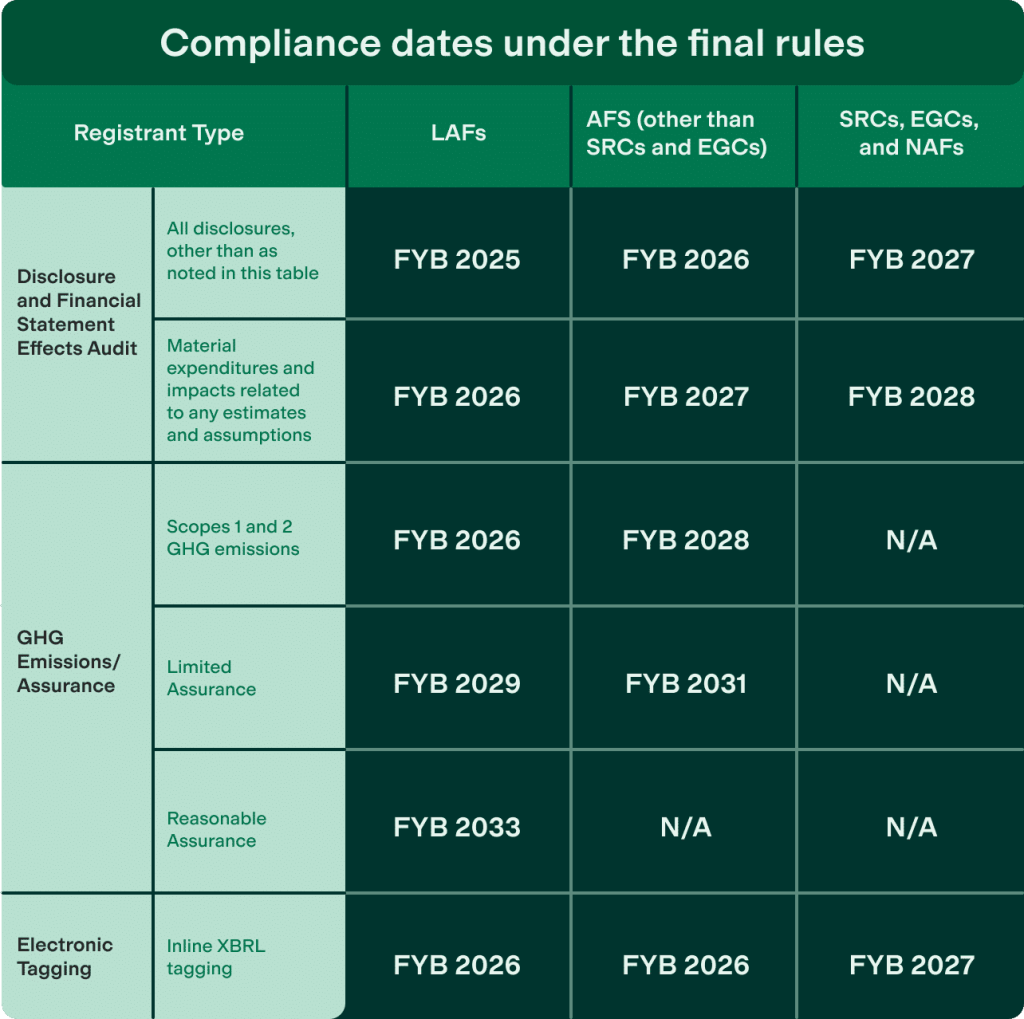Update on SEC’s climate disclosure rule: emissions, risks, and transparency

Updated on February 2025
The US Securities and Exchange Commission (SEC) has paused its defense of a climate disclosure rule that would require publicly traded companies to disclose climate-related risks. This decision, announced by acting chair Mark Uyeda, comes amid legal challenges to the rule, which had already been diluted from its original form. Both Uyeda and SEC commissioner Hester Peirce had opposed the rule, raising questions about the SEC’s authority to adopt it.
Despite the SEC’s reversal, large US companies may still be required to disclose emissions due to state laws like California’s or international regulations like the EU’s climate reporting rules. Critics argue that this rollback could make capital markets less efficient and allow polluters to hide potential risks, emphasizing the need for greater transparency in the face of growing climate-related financial risks.
*The below was originally published in March 2024
The SEC has approved the long-awaited climate disclosure rule, requiring large companies to disclose emissions and risks. Discover how this regulation emphasizes materiality and global standards for enhanced transparency and accountability.
Almost two years in the making, the U.S. Securities and Exchange Commission (SEC) passed The Enhancement and Standardization of Climate-Related Disclosures for Investors, a rule requiring some of the largest publicly traded companies to disclose their direct greenhouse gas emissions and the significant risks that climate change poses to their business. The rule promotes transparency about companies’ exposure to environmental impacts and the potential vulnerabilities. This increased transparency fosters greater accountability among companies for their actions and decisions regarding climate change.
Aligned to established frameworks such as the Task Force on Climate-related Financial Disclosures (TCFD) and the Greenhouse Gas (GHG) Protocol, the SEC’s rule aims to standardize climate reporting practices, and in doing so, further promotes the consistency, comparability, and reliability of reports that are crucial to investors. As evidenced by the rising trend of climate disclosures among many companies, investors are increasingly factoring climate risks into their decision-making processes.
5 key takeaways:
- Materiality is a key focus: The Commission doesn’t define “materiality” but expects registrants to apply traditional notions under federal securities law, giving firms significant discretion in determining what information to disclose in SEC climate filings. Many required disclosures are tied to materiality, allowing exclusion of immaterial disclosures. The rule adopts the traditional financial materiality standard and requires disclosure of greenhouse gas emissions only if they are deemed material to investors, avoiding the broader double materiality approach used in the EU.
- Climate-related disclosures: Companies will have to disclose climate-related risks that have a material impact on the business, actions taken to mitigate or adapt to such risks, management and oversight of climate-related risks, as well as the capitalized costs, expenses, and losses incurred as result of severe weather events. If applicable the use of transition plans and scenario analysis must also be disclosed. The framework for these disclosures, including risk and opportunity assessments, will be built off those provided by the TCFD.
- Emissions Reporting: The rule mandates that large accelerated filers (LAFs) and accelerated filers (AFs) disclose both Scope 1 and Scope 2 emissions, covering direct emissions and emissions from purchased electricity, respectively. These disclosures must undergo independent assurance reviews to ensure accuracy. Currently there is no requirement to disclose Scope 3 emissions, which account for emissions generated throughout a company’s supply chain and from the consumption of its products.
- Impacts on financial statements: The new rule mandates companies to include a note in their financial statements detailing the financial impacts of severe weather events, including costs, expenditures, and losses such as fires, sea-level rise, and flooding. Companies must also disclose how climate-related factors materially impact their financial statements.
- Electronic Tagging: The mandated climate-related disclosures must include electronic tagging either in a separate, clearly labeled section of their registration statement or annual report, or within relevant sections. Alternatively, companies can incorporate these disclosures by reference from another SEC filing, provided they meet electronic tagging requirements. Specifically, climate-related disclosures must be electronically tagged in Inline XBRL format, ensuring standardized and searchable data for investors and regulatory purposes.
Implementation timeline
The implementation of the final rules will be gradual, with compliance dates varying based on the filer status of each registrant. This phased approach ensures a smooth transition for companies as they adapt to the new requirements.

How Position Green can help
To successfully comply with the SEC’s new requirements, companies will need more robust systems for managing their emissions data and assessing knowledge gaps.
Position Green’s carbon accounting software simplifies how you measure, track and disclose GHG emissions and climate-related risks across all operations, so you can keep compliant and work with data you can trust. Our seasoned advisors are also on hand to support you in developing strategies that turn your sustainability performance into competitive edge.


